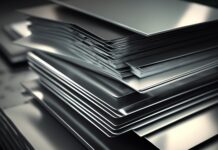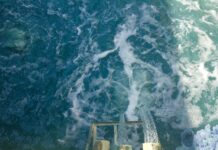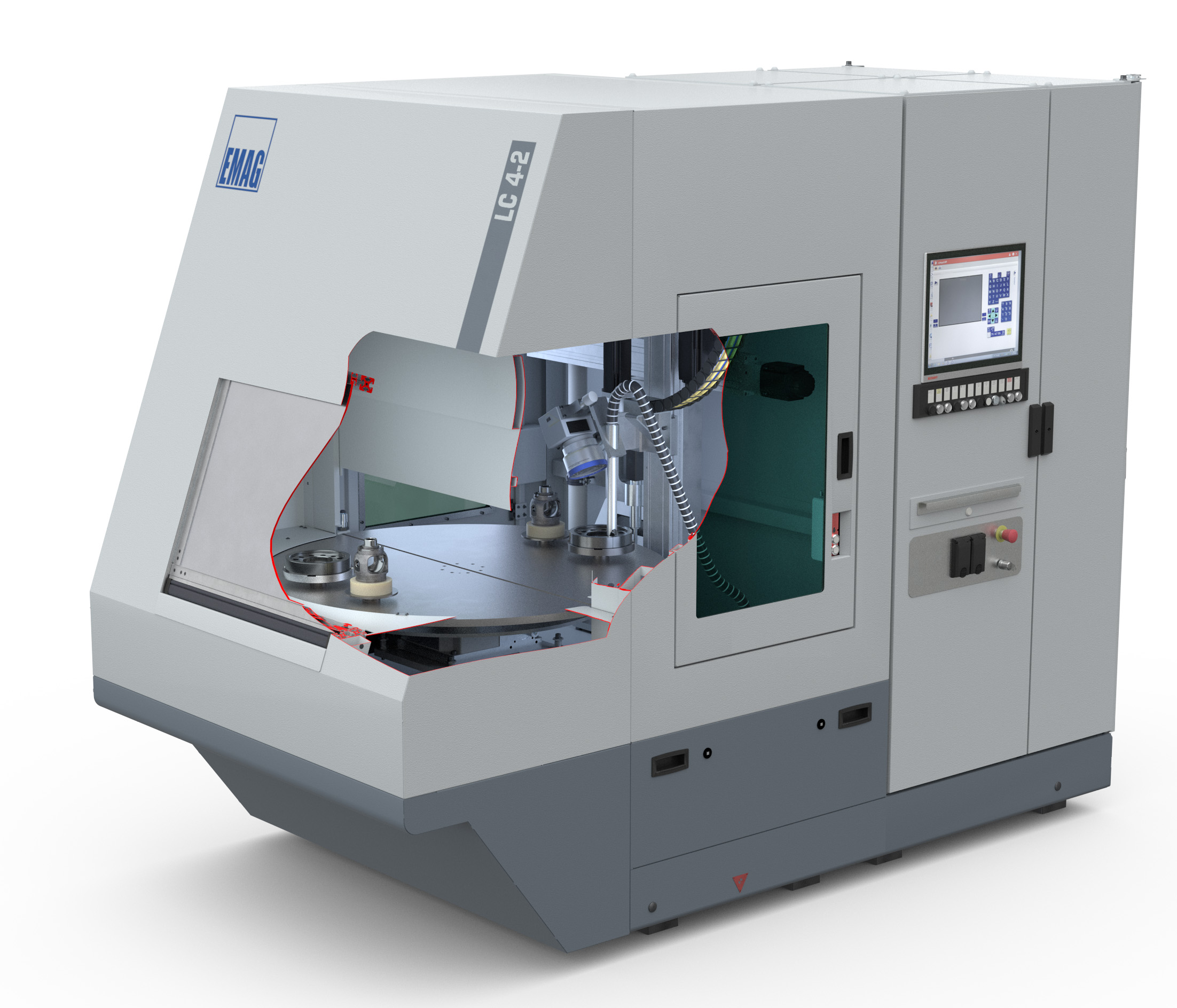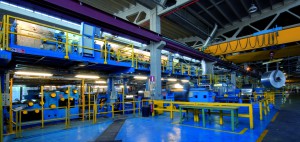
In “chemical surface conversion” processes, the material is placed in baths based on chromic and phosphoric acids, which produce a passive film of few microns through the transformation of the aluminium surface layers. Those treatments confer a good degree of resistance to corrosion and low levels of electrical surface resistivity; besides, they favour the painting adhesion in the successive operations. Even if the aluminium surface converted by chromic and phosphoric acids represents an excellent result in terms of material machinability and resistance to corrosion, it is well-known the problem that it causes on human health. Several of these substances classified according to the relative carcinogen, mutagen or toxic characteristics, are potentially noxious and dangerous for the health of the operators getting in touch with them.
How replacing chrome?
Actually, several treatments based on chrome have already been eliminated; others, like those based on Cr+3 (such as phosphochromatization) are not currently allowed, yet, but they will be dismissed in the lapse of few years. The “Laminazione Sottile Group” in Caserta is a historical industrial reality headquartered in Campania, known on a world scale, operating in the sector of subtle aluminium rolled sections. The Managing Director, Massimo Moschini, explains: «The Laminazione Sottile Group, assisted by the Department of Material Engineering and Production of the Engineering Faculty of Federico II University, carried out researches lasted five years to identify treatments 100% chrome-free and besides applicable in several commodity sectors, like the food packaging and the pharmaceutical, heat exchange, building and industrial applications». To reach this result, they have devised innovative electrochemical treatments based on titanium and/or zirconium, implementable on industrial scale as well. Such processes can be schematized in three different phases: the first, said of “dissolution”; the second one of “complexation”; the third, of “formation of the inorganic coating” of the aluminium. During such phases, in short, the metal develops a surface coating that can have a protection degree against corrosion that can vary depending on both the variation of the type and quantity of the elements on which reactions are based and on the choice of process parameters. Another important aspect concerns the successive treatment, that is to say painting: «We were not sure that the new “chrome-free” treatments were suitable for painting, since the majority of the paintings available on the market are developed to adhere to a chromic surface layer. Thanks to an immense scientific and industrial effort of research and test, in which we have modified both process parameters and the paint formulations and their application method, we have succeeded in making the painting operation “compatible” with the new coatings. On the other hand, it is the whole of the three elements, material, converted layer and paint that make the result exceptional in terms of resistance to corrosion and low environmental impact». Moschini: «The results we have reached are even surprising and, thanks to the engineering activity, we can now use these treatments on a broad scale and offer them to our customers with both “rinse” and “no-rinse” methodology». “Rinse” treatments are executed with immersion rinsing, “no-rinse” ones, instead, through spreading with roll system. «One of our production plants – specifies Moschini – is already fully “chrome-free”; another is in conversion phase and in few months 100% of our production will be completely chrome-free. Besides, thanks to tests and trials with supplier companies, we have also developed chemical products and formulations perfectly calibrated on our requirements».
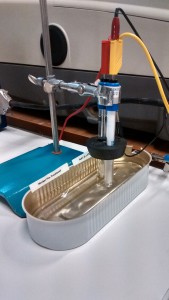
The response on the market
“Chrome-free” treatments developed by Laminazione Sottile Group, in version both “rinse” and “no-rinse”, grant quality and performances in line with chromic ones. Massimo Moschini: «It is an exceptional result, unexpected just few years ago and that allows us to be ready with a notable anticipation to the “change” that regulations will require in 2017, when also in Italy any chromic treatment will be outlawed». In many cases the market, however, does not recognize the value of that effort, yet. «Unfortunately not. Several enterprises go on asking for chromic treatments, since still slightly cheaper than ecologic ones, whose cost is higher by about 5%. However, when the problem will appear, that is to say when enterprises will be obliged to deal with the new regulations, all will have to conform to them. Luckily, some realities already start taking care of this new treatment category with provident advance, not to be suddenly placed out».
“rinse” and “no-rinse” conversion treatments
In “rinse” treatments, after the aluminium immersion into the chemical pre-treatment product, it is necessary a successive washing phase with demineralized water, followed by a drying phase.
This implies, necessarily, a supplementary process of depuration of washing waters to eliminate all polluting components before the drain: “undesired” products are often toxic, noxious or, even, “special wastes” and they must be disposed by entrusted personnel into opportune landfills. Vice versa, “no-rinse” products, once applied /spread on the metal surface, do not need a successive washing but only a drying; for that reason, they can be considered “total consumption”. Therefore, the combination of “chrome-free” conversion treatments with “no-rinse” processes constitutes the best that the technology can offer from the environmental and ecologic point of view.
Specific corrosion Tests
Since this type of treatments is likely to have several applications and different working environments, in some cases also aggressive (like for instance the one of heat exchangers or the food packaging), Laminazione Sottile has developed, in collaboration with the Chemistry Faculty of Federico II University in Naples, a corrosion assessment system based on the “Electrochemical Impedance Spectroscopy” (E.I.S.) That test provides for the system perturbation through a sinusoidal voltage signal, and the evaluation of the current response in un frequency range generally included between 105 and 10-2 Hz. This sinusoidal signal allows the circulation of densities of electrical anode and cathode currents, whose values increase when the concerned surfaces diminish. In general, the evaluation of the resistance to corrosion of an aluminium laminate is carried out through the permanence of the component itself in “salt mist chambers”. The logic of these new tests consists in identifying the correct process parameters of the treatment, so that the material gives the best response concerning the use for which it is provided. Moreover, Laminazione Sottile has devised some tests to monitor the kinetics of water and electrolytes absorption in the protective polymeric coating and to check the quality of the painting adhesion to the metal substrate.
Reference group in the aluminium sector
Laminazione Sottile Group, even if it is a company-owned enterprise, has international relevance and it is composed by three companies: Laminazione Sottile S.r.l., parent company of the Group, established in 1923, specialized in the implementation of rolled “aluminium” products with thicknesses included between 0.007 mm and 0.8 mm; Italcoat S.r.l., reality specialized in the treatment, surface coating and painting of the semi-subtle aluminium rolled section; Contital S.r.l., manufacturer and distributor of “wrinklewall” and “smothwall” containers, A-PET containers, rolls, wraps and backing paper for the food packaging.

